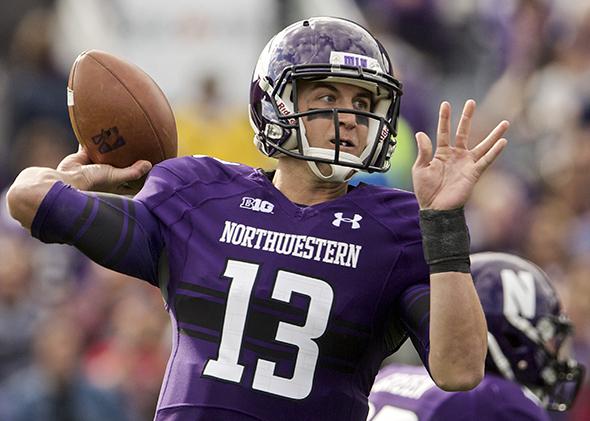Last week, after the National Labor Relations Board announced its decision to allow Northwestern University football players to unionize, some said it would mark the death knell for the current amateurism model of intercollegiate athletics. This is unsurprising in light of the widespread belief that unions will enable pay-for-play arrangements combined with a generally tepid public view of labor unions. Counterintuitively, however, labor law may provide the one viable jurisprudential avenue to survival for the NCAA.
At the heart of the NLRB decision last week was Regional Director Peter Sung Ohr’s conclusion that football scholarship athletes are employees. As he explained, they are “receiving scholarships to perform football-related services” for Northwestern “under a contract for hire in return for compensation.” Indeed, this is the very characterization the NCAA has fought for decades to avoid. It has long claimed instead that college athletes are students whose primary purpose is to receive an education and “go pro” in something else.
If the NCAA is wrong about this, as many others have suggested, its future could be in jeopardy, save for an antitrust exemption granted by Congress. Three pending antitrust lawsuits underscore this point. The first is a class-action suit filed by retired NBA player Ed O’Bannon that challenges NCAA limits on athletes’ uses of their likenesses. Second, a group of football and basketball players filed an antitrust suit to bar the NCAA and the five major conferences from prohibiting universities from compensating athletes. Most recently, Shawne Alston, a former West Virginia University football player, sued the NCAA and conferences, claiming they conspired to limit the value of scholarships to less than the actual cost of attendance.
Assuming Ohr’s ruling is right—that scholarship athletes are employees—then the NCAA’s real problem is antitrust law, not labor law. Under the Sherman Act, the federal antitrust law, employers in a particular market cannot combine to place limits on the salaries and other benefits of employees without illegally restraining trade. The terms and conditions of athletes’ employment—the four-year limit on employment; the limit of salaries to scholarships, room, and board; the prohibition on hiring agents; the minimum academic qualification requirements—all appear to violate antitrust law unless the NCAA can demonstrate an economically pro-competitive purpose for these restrictions.
Put simply, the reclassification of student-athletes as student-employees shatters the NCAA’s amateurism defense to antitrust law. Without the shield of amateurism, the NCAA looks as if it would have nowhere to hide. That is where labor law comes back into play.
The Supreme Court has recognized a nonstatutory labor exemption to antitrust law. Because labor law requires collective action, antitrust law does not apply to disputes between unionized employees and management in certain contexts. Courts describe this as the “nonstatutory labor exemption” to antitrust law.
At the center of this idea, the Supreme Court has explained, is the protection of mandatory subjects of collective bargaining: wages, hours, and terms and conditions of employment. In order for collective bargaining to function properly, the core subjects of the negotiation—which by definition restrict the market through collective employer and employee action—are exempt from antitrust law.
As Maurice Clarett discovered, courts often protect collective bargaining agreements against antitrust claims. Clarett, the former Ohio State football star, sued the National Football League in 2003: He challenged the NFL’s prohibition against entering the draft prior to the passage of three full seasons after the player’s high school graduation, alleging it violated antitrust law. In a decision written by then–Judge Sonia Sotomayor, the 2nd U.S. Circuit Court of Appeals held that the nonstatutory labor exemption shielded the terms and conditions of the collective bargaining agreement between the NFL owners and players. That agreement included the draft restriction that Clarett challenged.
Applying this doctrine to the current situation, a labor agreement between the NCAA and a national union of student-athletes could save the NCAA. If the NCAA entered into a collective bargaining agreement on behalf of its member institutions with a union of employee-athletes, then presumably that agreement and its terms would be exempt from antitrust scrutiny. This would operate much like the labor agreements in professional sports between the owners and players’ unions, with the NCAA acting on behalf of the universities to set the terms of the relationship with the employee-athletes.
Interestingly, though, the terms of that agreement could preserve at least some, if not all, of the student-athlete model and the concept of amateurism. Such an arrangement would provide protection for the universities and athletes from intermeddling by third parties, particularly boosters and agents. A collective bargaining agreement could also ensure the preservation of nonrevenue sports, particularly if such athletes were part of the union. In short, it provides a way to preserve the status quo. Perhaps most importantly, it would save the NCAA from the imminent threat to its existence: antitrust law.
Why would scholarship athletes agree to such an arrangement? Preserving the status quo has many advantages for the students, particularly if the new arrangement provided better health insurance protections after college and longer six-to-eight year scholarships that would enable students a better opportunity to receive an education. Quarterback Kain Colter of Northwestern has indicated as much in his explanations of why the Northwestern athletes want to unionize.
The only remaining obstacle to a union-management relationship between employee-athletes and the NCAA would be the prohibitions in many states against public employee unions. If the survival of college sports hung in the balance, it is likely that states would quickly amend such statutes to provide for exemptions for college athletes.
Ironically, then, the labor unions may be the only way to save the NCAA.
